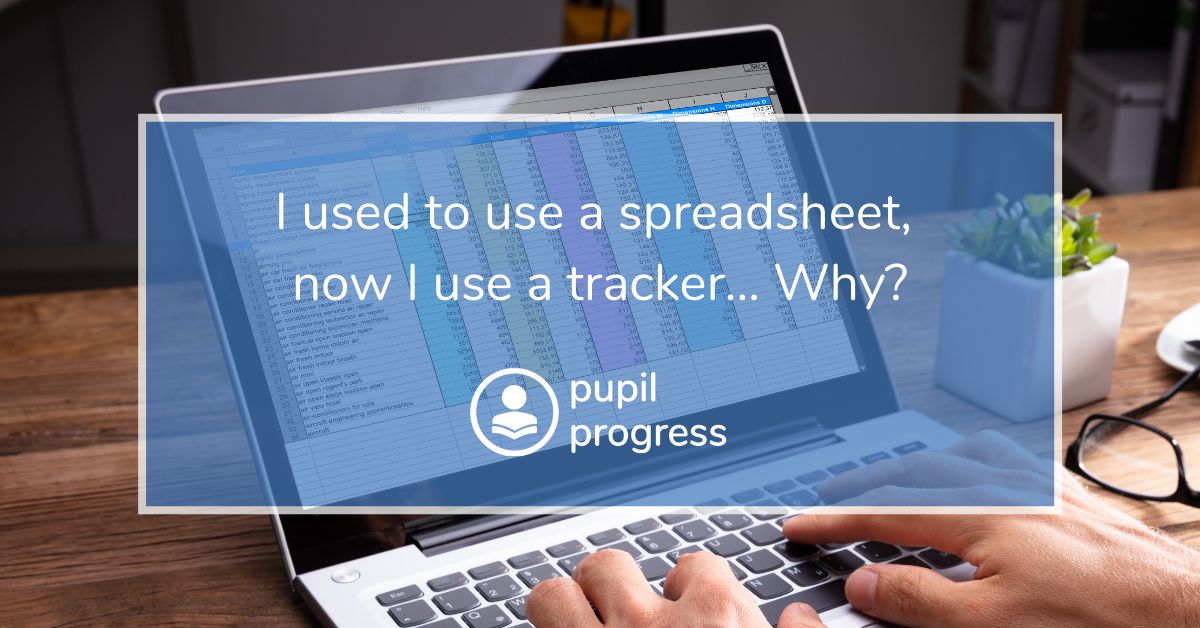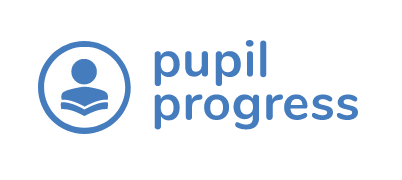I used to use a spreadsheet, now I use a tracker… Why?

Whether we like it or not, we’ve moved to a new age in teaching where accountability has cranked up a notch... or seven! Teacher stress and anxiety related to attainment targets is well-documented and keenly felt across the country. Believe me, I’ve been there: Head Teacher in front of me, Vice Principal to my right, Chair of Governors to my left, Reservoir Dogs soundtrack playing in my head, being subtly reminded that I’m currently only on a one year contract. Then, leaving the meeting to have four million things running through my brain as to how we can’t have the same thing happen again with the current Year 11 cohort, and then the whole cycle of stress beginning just two days into the new school term.
Fast forward a year, and I was far less stressed and anxious, with the dark cloud over my head had lifted. I sat in that same meeting with confidence: the results were 28% better than last year, our team felt in complete control of the current Year 11s, and the Year 10s coming through after them were also in a really good place. I even had a phone call from the VP afterwards:
VP: “Hi Brett, is tracking in the same place as it was in the last meeting?”
Me: “Yes, we haven’t completed another assessment, so no movement.”
VP: “Brilliant, lets leave this week’s meeting, I’ll get an update in a couple of weeks.”
That’s right: time saving, trust, and autonomy all in one hit!
So, what changed? What caused this dramatic shift, not only in results but also in anxiety and stress?
Twelve months before I’d realised that I wasn’t in control of the situation. I didn’t have a grasp of what was going on with my students. I wasn’t up-to-date with the whole picture. I was simply working hard and hoping that my students would do OK, and that it would all come together. Hope can be (not always) a dangerous word. Especially if you’re a believer and eternal optimist like me.
Why are your students’ grades like your bank balance?
No, that’s not the start of a joke. I’ve discovered a great analogy that helps explain what I’m trying to convey. Your pupils’ grades are like your bank balance: the less you engage with their grades, the more likely you’ll avoid looking at them. We’ve all been afraid of our bank balance at some point. Then that fear builds because you don’t know the exact picture. Because of the fear, you avoid it. You keep spending (because you have to), but because you aren’t looking at your balance you really don’t know whether things are OK… and so the negative cycle continues until you’re forced to look. So, why not just check your balance? What’s the reason for the avoidance? There used to be a barrier to the information. You used to have to physically go to the bank or cash point, you then had to keep a record of what you had spent between the last and the next visit, or you had to wait for a statement to be delivered (usually once a month), or as a last resort you had to call the bank.
These are all barriers. These barriers mean: “I’ll look tomorrow.” Tomorrow then turns into next week, which then turns into next month… and so on. So, what’s changed now? Why are people more engaged with their finances than ever before? The answer is internet banking, apps, and easy-to-use web software that allow you to access your balance quickly and easily whenever you need to, even directly before you’re buying something. It’s so fast now that you just have to look at your phone, tap on the app and *shazam*… that’s it! You can choose: “Oh, I don’t have enough money, I won’t buy that,” or: “Oh, I do have enough money, lets go nuts!” You get the picture. Finances become far less stressful when you know the whole picture. There’s no unknown, no shock, you’re always in control.
What’s the difference between a tracker and a spreadsheet?
Back to the tracking, and to where the turnaround came from. It was clear that the system I needed to give myself the full picture of my students’ progress wasn’t in place. I thought I had what I needed: a spreadsheet containing some key data. In fact, what I needed was a tracker.
A tracker is completely different to a spreadsheet. It’s comprehensive system that does the heavy lifting for you, allowing access to key data and information per pupil for each class and for the whole cohort. It allows important information to be accessed by all key stakeholders, at all times. Whereas, in my spreadsheet, I had a system that was creating barriers to vital information:
- Having to create my own tracking system = barrier
- Having to manually calculate the grades = barrier
- Having to find a look up to be able to use the latest grade boundaries = barrier
- Having to watch endless YouTube videos out how to get the spreadsheet to do what I needed it to do = barrier
- Having only a basic level of Excel expertise to do the calculations = barrier
- Not having enough time and brain space to focus on doing the job properly = barrier
And so on… When we have these barriers to finding out the full picture, we put off taking the time to work out how to find the information because it feels like too much hard work. The fatigue and tiredness that often go hand-in-hand with being a teacher promote procrastination around tasks that our brain knows require a lot of thought and effort. Much like your brain can convince you it’s OK to grab a quick few seconds’ sleep behind the wheel, your brain will subconsciously convince you: “It’s fine, I’m definitely going to do this next week… without question.” And we all know where that leads.
I was the person described above. I was extremely anxious about my students’ outcomes. I was stressed about the unknown. I worked extremely hard, it felt like I had worked my fingers to the bone, but I wasn’t working smartly and I was working in an environment where I wasn’t well informed.
It was only when I invested time in creating a tracking system that removed the barriers to the information I needed on a daily basis that I was able to plan strategically.
For those of you reading this thinking: “I only need to look at the tracking two or three times a year, what’s the big deal?” I’ve listed below the times in the year and number of events and / or activities that we need key data from our examined groups:
- Individual teacher meetings
- Team meetings
- Lesson observations
- Seating plan evidence
- Current progress (individuals)
- Current progress (whole class)
- Seating plans
- Line management meetings
- Pupil progress meetings
- 4-6 data points, per year
- Forecast grade
- Actual grade
- Parents’ evenings
- Forecast grade
- Actual grade
- Ad hoc parents’ meetings
- Strategic planning
- Reporting on mock test results and their impact on final grades
- Group setting
- Governors’ meetings
- This is GCSE only: double it if you also teach A-Level, treble it with BTEC, etc.
I hadn’t previously noted or respected the amount of things that I needed to use a tracking system for. When I realised this, forget the time I got back (which was a lot) – the stress it relieved was immeasurable.
To add to this, once I opened the data box, I couldn’t stop looking inside it… and neither could my staff. We couldn’t stop asking ourselves:
- Are we teaching what we need to teach?
- Has the topic gone well?
- What do we need to focus on now?
- Are the students on target?
- What’s the strategy moving forward?
Having a tracker revolutionised our approach to delivery, and because access to the information was so easy it allowed me to gain buy-in from all key stakeholders. We were able to be incredibly proactive, because we had a clear idea of the situation in early Year 11 and Year 10. We were able to put a clear action plan in place as to what we were going to deliver with the number of lessons we had left to achieve the greatest amount of impact.
Above all, “the Big Tamale” was that I knew – pretty much to a single % – what the results would be in August, because we’d been living and breathing this from the start of Year 10. Not only were we on target, but there were no surprises, and no cold sweats a week before Results Day. The reason: the tracking system was easy to access, and told me everything I needed to know without any barrier to this information.
The overriding message I’m trying to convey is – whether you do it through Excel, GoogleSheets or use the Pupil Progress tracking system – make sure that you invest time or money into a tracker. Don’t just use a spreadsheet. Implementing a comprehensive tracking system takes away all barriers to the key information you need in order to inform planning, delivery, strategy and buy-in from key stakeholders. Speaking from real, lived experience – this will dramatically reduce the stress you’re feeling and bring the enjoyment back into your teaching.

Brett Griffin
Founder and Chief Executive Officer

Comments